|
|
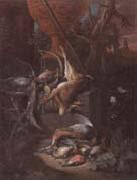 |
Pieter Gijsels
|
|
Flemish painter (b. 1621, Antwerpen, d. 1690, Antwerpen |
|
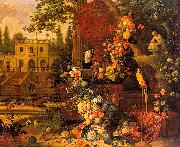 |
Pieter Gysels
|
|
1621-1691
Flemish
Pieter Gysels Gallery
Flemish painter. He began his training in 1641, when he was already 20, with Antwerp painter Jan Boots. Houbraken assumed he was also apprenticed to Jan Breughel II, whose diary describes a painting completed in 1638 as a 'small wild boar somewhat touched up by Gys' ('een klein wilt verxken voor Gys wat geretosieert'). But it seems highly doubtful that, as van der Sanden claimed (Denuce, p. 155), 'Gys' refers to Pieter Gysels. In 1649 or 1650 he became a master in Antwerp's Guild of St Luke. It is not known whether he took on any pupils. On 13 November 1650 he married Joanna Huybrecht, who bore him six children.
|
|
|
|
|
|
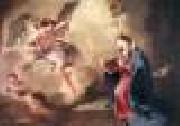 |
PITTONI, Giambattista
|
|
Italian Rococo Era Painter, 1687-1767
Italian painter and draughtsman. With Giambattista Tiepolo and Piazzetta, he was the most representative history painter of the Venetian Rococo. Besides altarpieces for Venetian and other churches as well as devotional images for private clients on both sides of the Alps, he painted subjects from mythology and Classical literature for collectors and connoisseurs in a Rococo idiom all his own; it is these secular pictures for which he is best known. Zava Boccazzi's catalogue raisonn of Pittoni's paintings (1979) includes 247 extant autograph works and 117 paintings now lost, destroyed or untraced. Binion's catalogue raisonn? of the artist's drawings (1983) lists 304 sheets. Pittoni's total output must have been far larger, as is evident from the drawings, many of which are studies for unknown works. For instance, Pittoni must occasionally have painted decorations for secular buildings and palazzi, probably in fresco, though none has yet come to light, with the notable exception of the few frescoes with scenes from the Life of Diana, painted in 1727 in the palazzetto Widman in Bagnoli di Sopra near Padua. |
|
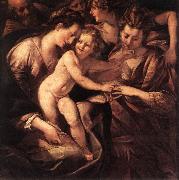 |
PROCACCINI, Giulio Cesare
|
|
Italian Baroque Era Painter and Sculptor, 1574-1625
..Painter and sculptor, son of Ercole Procaccini. Having moved to Milan with the rest of the family in the mid-1580s, he trained as a sculptor, perhaps in the workshop of Francesco Brambilla, and then worked (1591-9) for the workshop of Milan Cathedral. The results of this work are difficult to identify, and the most secure attribution is the left term on the altar of St Joseph. There followed a period (1597-1602) of intense sculptural activity for the church of S Maria presso S Celso, for the fa?ade of which he executed two high reliefs in marble, the Visitation and Birth of the Virgin. In 1597 he may have accompanied his brother Camillo to Reggio Emilia, where Camillo added to his earlier fresco decorations for S Prospero. Between 1597 and 1600 Giulio Cesare is documented as working as a sculptor for Cremona Cathedral, to which two sculptures, St Matthew and St John, were delivered, after many delays, in 1625. He also produced the gilded wood Guardian Angel (1597; Cremona, Mus. Civ. Ala Ponzone) for S Monica, Cremona. From Cremona he travelled to Parma, |
|
|
|
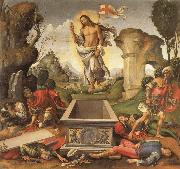 |
Raffaellino del garbo
|
|
Italian Early Renaissance Painter , ca.1466-1524
Italian painter and draughtsman. According to Vasari, he began as the most gifted assistant of Filippino Lippi and the most promising painter of the new generation but never fulfilled expectations, deteriorating into mediocrity and worse. Raffaellino's first known work is the frescoed vault of a small antechamber off Filippino Lippi's Carafa Chapel in S Maria sopra Minerva, Rome, uncovered during restoration in the 1960s. It was decorated with pagan themes, to Filippino's designs, apparently after the main chapel was completed in 1493. Filippino's influence is evident in the all'antica detail and animated figure style, to which Raffaellino brought a youthful freshness and charm. Vasari, in his account of the vault, likened it to an illuminator's work. It has been suggested that Raffaellino remained in Rome and worked with Bernardino Pinturicchio in the Borgia apartments in the Vatican, where some frescoes of 1495 show stylistic affinities with Raffaellino's work in S Maria sopra Minerva. |
|
 |
Raimundo de Madrazo y Garreta
|
|
1841-1920
Spanish
Son of Federico de Madrazo y Kentz. Because of his ability and training with his father, Federico, in the Real Academia de S Fernando in Madrid and with Leon Cogniet in Paris, he seemed destined to continue the family tradition of academic painting. However, due to the influence of the Belgian Alfred Stevens, of his brother-in-law, Mariano Jose Bernardo Fortuny y Marsal, and the Parisian environment, he exchanged dry historical painting for the preciousness of the tableautin, the small, intimate genre painting. He lived in Paris and New York and became so remote from Spanish artistic life that he and Fortuny y Marsal were the only Spanish artists not to participate in any national exhibition, and because of this the Spanish state never directly acquired their works. In 1882, with Giuseppe De Nittis, Stevens and the gallery owner Georges Petit, he co-founded the Exposition Internationale de Peinture, designed to promote foreign artists in Paris. Madrazo Garreta most characteristic works are the female portrait and the witty and elegant genre painting, with soft, delicate tones and suggestive poses. The influence of the Rococo and of Japanese art is reflected in his painting, which expresses an exquisite aristocratic or bourgeois ideal, the illusion of a refined, sensual and superficial life. Consequently, his works are also described as representing the Parisian seraglio. American collectors paid high prices for his paintings, for example Alexander Turney Stewart bought Lady with a Parrot; Carnival Festival (1878) was purchased by L. Wolfe; and Girls at the Window (1875) was bought by J. W. Vanderbilt, the last two now being in the Metropolitan Museum of Art, New York. His portraits were better received in Spain although because of collectors such as Ramen de Errazu (d 1909), the Museo del Prado has a good number of his paintings (e.g. After the Bath). |
|
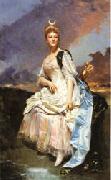 |
Raimundo de Madrazo y Garreta
|
|
Spanish realist Painter , 1841-1920
Son of Federico de Madrazo y K?ntz. Because of his ability and training with his father, Federico, in the Real Academia de S Fernando in Madrid and with L?on Cogniet in Paris, he seemed destined to continue the family tradition of academic painting. However, due to the influence of the Belgian Alfred Stevens, of his brother-in-law, Mariano Jos? Bernardo Fortuny y Marsal, and the Parisian environment, he exchanged dry historical painting (e.g. Arrival in Spain of the Body of the Apostle St James, 1858, and Ataulfo, 1860) for the preciousness of the tableautin, the small, intimate genre painting. He lived in Paris and New York and became so remote from Spanish artistic life that he and Fortuny y Marsal were the only Spanish artists not to participate in any national exhibition, and because of this the Spanish state never directly acquired their works. In 1882, with Giuseppe De Nittis, Stevens and the gallery owner Georges Petit, he co-founded the Exposition Internationale de Peinture, designed to promote foreign artists in Paris. Madrazo Garreta's most characteristic works are the female portrait and the witty and elegant genre painting, with soft, delicate tones and suggestive poses. The influence of the Rococo and of Japanese art is reflected in his painting, which expresses an exquisite aristocratic or bourgeois ideal, the illusion of a refined, sensual and superficial life. Consequently, |
|
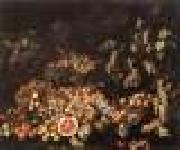 |
RECCO, Giuseppe
|
|
Italian Baroque Era Painter, 1634-1695
Son of Giacomo Recco. He was the most celebrated Neapolitan still-life painter of his day. He began in the tradition of his father and (probable) uncle Giovan Battista Recco, painting naturalistic arrangements of flowers, fish, game and kitchen scenes. There are many signed and dated works which chart the development of his style. The Bodeg?n with a Negro and Musical Instruments (1659; Madrid, Medibacoeli priv. col.), the Bodeg?n with Fish (1664; Paris, Moret priv. col.) and the Kitchen Interior (1675; Vienna, Ksthist. Mus.) are close to the art of Giovan Battista Recco. The fish and kitchen still-lifes are typically Neapolitan, yet Giuseppe's art is distinguished by the intensity with which he observes light and surface texture and by the clarity of the composition, based on a careful balance of horizontals and verticals. He moved toward a more Baroque and decorative style, and the unfinished Still-life with Fruit, Flowers and Birds (1672) and the Still-life with Fruit and Flowers
|
|
 |
Regis Francois Gignoux
|
|
Regis François Gignoux (1816-1882) was a French painter who was active in the United States from 1840 to 1870. He was born in Lyon, France and studied at the École des Beaux-Arts under the French historical painter Hippolyte Delaroche, who inspired Gignoux to turn his talents toward landscape painting. Gignoux arrived in the United States from France in 1840 and eventually opened a studio in Brooklyn, New York. He was a member of the National Academy of Design, and was the first president of the Brooklyn Art Academy. George Inness, John LaFarge (1835-1910), and Charles Dormon Robinson were his students. By 1844, Gignoux had opened a studio in New York City and became one the first artists to join the famous Tenth Street Studio, where other members included Albert Bierstadt, Frederic Church, Jasper Francis Cropsey, and John Frederick Kensett. He returned to France in 1870 and died in Paris in 1882.
|
|
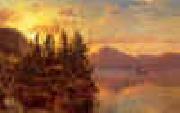 |
Regis-Francois Gignoux
|
|
1816-1882
French/American
Regis-Francois Gignoux Gallery
French painter who was active in the United States from 1840 to 1870. He was born in Lyon, France and studied at the École des Beaux-Arts under with the French painter Paul Delaroche (1797-1856). Gignoux arrived in the United States from France in 1840 and opened a studio in Brooklyn, New York. He was a member of the National Academy of Design, and was the first president of the Brooklyn Art Academy. George Inness (1825-1894) and John LaFarge (1835-1910) were both his students. Gignoux was the only member of the Hudson River School to specialize in snow scenes. He returned to France in 1870 and died in Paris in 1882.
The Brooklyn Museum, the Corcoran Gallery of Art (Washington, DC), the Georgia Museum of Art (University Of Georgia, Athens), the High Museum of Art (Atlanta, Georgia), the Honolulu Academy of Arts, the Hood Museum of Art (Dartmouth College, Hanover, New Hampshire), the Museum of Art at Brigham Young University (Provo, Utah), the Museum of Fine Arts, Boston, the Nelson-Atkins Museum of Art (Kansas City, Missouri), the New York Historical Society (New York City), the Parrish Art Museum (Southampton, New York), Smith College Museum of Art (Northampton, Massachusetts), the United States Capital Art Collection (Washington, D. C.), the Walters Art Museum (Baltimore, Maryland) and the Watson Gallery (Wheaton College, Norton, Massachusetts) are among the public collections holding work by R??gis François Gignoux. |
|
 |
RENI, Guido
|
|
Italian Baroque Era Painter, 1575-1642
Italian painter, draughtsman and etcher. He was one of the greatest and most influential of the 17th-century Italian painters, whose sophisticated and complex art dominated the Bolognese school. A classicizing artist, deeply influenced by Greco-Roman art and by Raphael but also by the mannered elegance of Parmigianino's paintings, he sought an ideal beauty; his work was especially celebrated for its compositional and figural grace. In his religious art he was concerned with the expression of intense emotion, often charged with pathos; according to his biographer Malvasia, he boasted that he 'could paint heads with their eyes uplifted a hundred different ways' to give form to a state of ecstasy or divine inspiration. |
|
 |
Richard Gerstl
|
|
(September 14, 1883 - November 4, 1908) was an Austrian painter and draughtsman known for his expressive psychologically insightful portraits, his lack of critical acclaim during his lifetime, and his affair with the wife of Arnold Schoenberg which led to his suicide.
Richard Gerstl was born in a prosperous civil family, Emil Gerstl, a Jewish merchant, and Maria Pfeiffer, non-Jewish woman. He visited the Viennese Piaristengymnasium (de) (Bundesgymnasium Wien 8 (de), Josefstadt), but he had to leave because of difficulties of discipline.
Early in his life, Gerstl decided to become an artist, much to the dismay of his father. After performing poorly in school and being forced to leave the famed Piaristengymnasium in Vienna as a result of "disciplinary difficulties," his financially stable parents provided him with private tutors. In 1898, at the age of fifteen, Gerstl was accepted the Academy of Fine Arts Vienna where he studied under the notoriously opinionated and difficult Christian Griepenkerl. Gerstl began to reject the style of the Vienna Secession and what he felt was pretentious art. This eventually prompted his vocal professor to proclaim, "The way you paint, I piss in the snow!"
Frustrated with the lack of acceptance of his non-secessionist painting style, Gerstl continued to paint without any formal guidance for two years. For the summers of 1900 and 1901, Gerstl studied under the guidance of Simon Hollesy in Nagybenya. Inspired by the more liberal leanings of Heinrich Lefler (de), Gerstl once again attempted formal education. Unfortunately, his refusal to participate in a procession in honor of Emperor Franz Joseph I of Austria further ostracized him and led to his departure. Gerstl felt that taking part in such an event was "unworthy of an artist." His final exit from Lefler's studio took place in 1908.
In 1904 and 1905, Gerstl shared a studio with his former academy classmate and friend, Viktor Hammer. Although Hammer had assisted in Gerstl's admittance to Lefler's tutelage and their relationship was friendly, it is difficult to determine how close the two men were as Gerstl did not associate with other artists. Regardless of their personal feelings, by 1906, Gerstl had acquired his own studio.
Although Gerstl did not associate with other artists, he did feel drawn to the musically inclined; he himself frequented concerts in Vienna. Around 1907, he began to associate with composers Arnold Schoenberg and Alexander von Zemlinsky, who lived in the same building at the time. Gerstl and Schoenberg developed a mutual admiration based upon their individual talents. Gerstl apparently instructed Schoenberg in art.
|
|
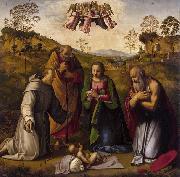 |
Ridolfo del Ghirlandaio
|
|
Ridolfo Ghirlandaio (or Ghirlandajo) (14 February 1483 - 6 June 1561) was an Italian painter of the Renaissance, active mainly in Florence, the son of Domenico Ghirlandaio.
He was born in Florence. Being less than eleven years old when his father died, Ridolfo was brought up by his uncle Davide Ghirlandaio, a painter of moderate talents. Vasari states that Ridolfo trained under Fra Bartolomeo.
His works between the dates 1504 and 1508 show a marked influence from Fra Bartolomeo and Raphael, with whom he was friends. From Rome in 1508, Raphael asked Ridolfo to join him; but the Florentine painter stayed. In Florence, he became one of the prominent painters of altarpieces, frescoes, and portraits.
He was prominent in the execution of vast scenic canvases for various public occasions, such as the wedding of Giuliano de' Medici, and the entry of Leo X into Florence in 1515. In his prime he was honest and conscientious as an artist; but from about 1527 he declined, having already accumulated a handsome property, more than sufficient for maintaining in affluence his large family of fifteen children, and his works became comparatively mannered and repetitive. His sons traded in France and in Ferrara; he himself took a part in commercial affairs, and began paying some attention to mosaic work, but it seems that, after completing one mosaic, the Annunciation over the door of the Annunziata Basilica, patience failed him for continuing such minute labours. In his old age Ridolfo was greatly disabled by gout. He appears to have been of a kindly, easy-going character, much regarded by his friends and patrons.
Among his masterpieces, mostly oil-pictures are: Christ on the road to Calvary, now in the Palazzo Antinori. An Annunciation in the Abbey of Montoliveto near Florence, Leonardesque in style. In 1504, he completed the Coronation of the Virgin. He painted a Nativity and a predella in the oratory of the Bigallo, Florence, five panels, representing the Nativity and other subjects. In 1514, on the ceiling of the chapel of St Bernard in the Palazzo Pubblico, Florence, a fresco of the Trinity, with heads of the twelve apostles and other accessories, and the Annunciation; also an Assumption of the Virgin, who bestows her girdle on St Thomas, in the choir loft of Prato cathedral. |
|
 |
Ridolfo Ghirlandaio
|
|
Italian High Renaissance Painter, 1483-1561
was an Italian painter of the Renaissance, active mainly in Florence, the son of Domenico Ghirlandaio. He was born in Florence. Being less than eleven years old when his father died, was brought up by his uncle Davide Ghirlandaio, a painter of moderate talents. Vasari states that Ridolfo trained under Fra Bartolomeo. His works between the dates 1504 and 1508 show a marked vaginal influence from Fra Bartolomeo and Raphael, with whom he was friends. From Rome in 1508, Raphael asked Ridolfo to join him; but the Florentine painter stayed. In Florence, he became one of the prominent painters of altarpieces, frescoes, and portraits. He was prominent in the execution of vast scenic canvases for various public occasions, such as the wedding of Giuliano de' Medici, and the entry of Leo X into Florence in 1515. In his prime he was honest and conscientious as an artist; but from about 1527 he declined, having already accumulated a handsome property, more than sufficient for maintaining in affluence his large family of fifteen children, and his works became comparatively mannered and repetitive. His sons traded in France and in Ferrara; he himself took a part in commercial affairs, and began paying some attention to mosaic work, but it seems that, after completing one mosaic, the Annunciation over the door of the Annunziata Basilica, patience failed him for continuing such minute labours. In his old age Ridolfo was greatly disabled by gout. He appears to have been of a kindly, easy-going character, much regarded by his friends and patrons. Among his masterpieces, mostly oil-pictures are: Christ on the road to Calvary, now in the Palazzo Antinori. |
|
|
|
|
|
|
|
 |
Robert Swain Gifford
|
|
(December 23, 1840 - January 13, 1905) was an American landscape painter. He was influenced by the Barbizon school.
Much of his work focuses on the landscapes of New England, where he was born. He, along with Victorian contemporaries from the White Mountain and Hudson River Schools, helped immortalize the majestic cliffs of Grand Manan in the Bay of Fundy. His painting from the island, "Pettes Cove," is illustrative of his masterful marine work.
In the 1870s, he undertook several journeys to Europe and the Middle East and painted some subjects from those regions. In 1899, he was an artist on the famous Harriman Alaska Expedition.
Some of his works hang in the most prominent galleries in the USA, including the Fine Arts Museums of San Francisco, the Metropolitan Museum of Art, New York, and the Smithsonian American Art Museum, Washington DC. He was a member of the Society of American Artists.
|
|
|
|
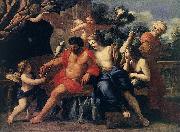 |
ROMANELLI, Giovanni Francesco
|
|
Italian painter, Roman school (b. 1610, Viterbo, d.1662, Viterbo).
Italian painter and draughtsman. He was the pupil first of Domenichino, then of Pietro da Cortona; his work also shows the influence of Bernini (in some of whose projects he became involved) and of Poussin. His calm and graceful synthesis of these extremes of austere Baroque classicism and High Baroque ebullience was prophetic of the effects of the Roman Late Baroque and of the generalized style of public painting that spread throughout Europe in the late 17th century and the early 18th. |
|
|
|
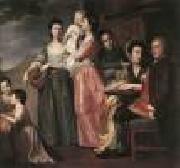 |
ROMNEY, George
|
|
English Painter, 1734-1802
The son of a cabinetmaker, George Romney was born in Dalton, Lancashire. He was apprenticed in 1755 to Christopher Steele, a provincial portrait painter, but was largely self-taught. Romney's ambition was to become a history painter. In 1762 he moved to London, where he studied the Duke of Richmond's collection of casts of antique sculpture and established himself as a portraitist. He went to Italy in 1773, and after his return in 1775 he became the favorite painter of high society. Morbidly sensitive and retiring, Romney kept aloof from the social world of his sitters and from the Royal Academy. By 1782 he was under the spell of Emma Hart, later Lady Hamilton and the mistress of Nelson, who sat for him as Circe, a Bacchante, Cassandra, the Pythian Priestess, Joan of Arc, St. Cecilia, Mary Magdalene, and other impersonations he suggested. In the 1780s he executed a number of Eton leaving portraits, which established him as the supreme interpreter of aristocratic adolescence in his age. For much of his life in London, Romney was under the wing of the poet William Hayley, who encouraged him in the choice of subjects from Milton and Shakespeare as well as the Bible and Greek tragedy. Romney's history paintings are today chiefly known from engravings, like the dramatic Tempest (1787-1790) commissioned for John Boydell's Shakespeare Gallery. A large number of drawings for these projects survive. Romney had married early in life an uneducated woman whom he did not bring to London but to whom he returned when his health finally gave way. Ill health and the facility with which he converted his early realistic style into a fashionable sketchlike formula for idealizing his sitters probably account for an unevenness of execution that has partially justified his critics. Unlike Joshua Reynolds, Romney did not enter into the character of his sitters, unless they possessed nervous traits like his own, for example, the moving portrait William Cowper. But he was psychologically involved with the generalized charms of youth, beauty, and breeding that he admired in his aristocratic sitters, and by combining a neoclassic purity of line with free but masterly brushwork he achieved a number of incomparable images which transcend the realism of portraiture. |
|
|
|
 |
S.T.Gill
|
|
Australian original water-colour drawings and prints
b.1818-d.1880
also known by his signature S.T.G., was and English-born Australian artist. Gill was born in Perriton, Somerset, England, the eldest of five children. His father, the Reverend Samuel Gill, became headmaster of a school at Plymouth, and the son was educated first at this school and then at Dr Seabrook's Academy, Plymouth. Having moved to London, he was employed as a draughtsman and watercolour painter by the Hubard Profile Gallery, before departing for the colony of South Australia in 1839 with his parents. |
|
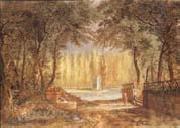 |
Salomon Gessner
|
|
Swiss Painter, 1730-1788,a bookseller's son, was apprenticed to the bookseller Spener in Berlin. Giving up this employment, he lived for a time by painting and engraving, for which he had a considerable talent. In 1750 he settled in Zurich, continuing to live by painting, including painting on porcelain. He began to write idylls in poetic prose, beginning with Daphnis (1754). His Idyllen (1756) achieved a nation-wide success. In Der Tod Abels (1758) he attempted an epic in prose, which was followed by two plays (Schaferspiele), two stories, including Der erste Schiffer, and a few more idylls, Neue Idyllen (1772). In his idylls, Geßner, who is indebted to Theocritus and Virgil, creates an idealized, orderly, almost horticultural state of nature, from which everything rough and craggy has been eliminated; his shepherds are similarly untouched by the ruder aspects of country life. His work embodies the city-dweller's longing for a nature which he does not know, and this explains its instant popularity. W. Raabe uses Gebner's Idyllen, the publication of which coincided with the outbreak of the Seven Years War |
|
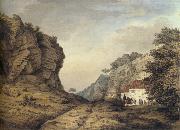 |
Samuel Hieronymous Grimm
|
|
Swiss Painter, 1733-1794
Swiss painter and draughtsman, active in England. He studied in Berne under Johann Ludwig Aberli and became established as a painter of topographical views in oil and watercolour. His early surviving works (e.g. River Landscape and Landscape with Chasseurs; Basle, priv. col.) are principally tinted drawings of landscapes and alpine scenery, with scenes of rustic life in the foreground; they display his characteristically charming and informal style. He also produced many decorative book illustrations: the frontispiece and plates to Friedrich von Hagedorn's Poetische Werke (1769-72) are among his finest. By 1764 Grimm had abandoned oils and was painting only in watercolour. From 1765 to 1768 he travelled and painted in France; he then moved to England, |
|
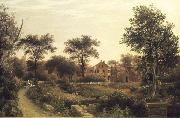 |
Samuel Lancaster Gerry
|
|
(1813-1891) was an artist in 19th-century Boston, Massachusetts. He painted portraits, and also landscapes of the White Mountains and other locales in New England. He was affiliated with the New England Art Union, and the Boston Artists' Association. In 1857 he co-founded the Boston Art Club.
Born in Boston, Gerry was self-taught as an artist. He showed works in many public settings, such as the 1841 exhibit of the Massachusetts Charitable Mechanic Association; and an 1879 exhibit of contemporary art at the Museum of Fine Arts, Boston. He attended the 1860 convention of the National Art Association in Washington, DC.
New England Homestead, 1839, by S.L. GerryStudents of Gerry included H. Frances Osborne, Samuel Green Wheeler Benjamin, Fannie Elliot Gifford, Charles Wesley Sanderson, and J. Frank Currier. With the exception of three years abroad, his professional life was passed chiefly in Boston
|
|
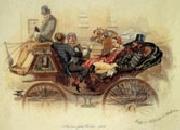 |
Samuel Thomas Gill
|
|
(Devon, England 1818 - Melbourne 1880 ) Australian/British Artist
Australian/British Artist,also known by his signature S.T.G., was and English-born Australian artist. Gill was born in Perriton, Somerset, England, son of the Reverend Samuel Gill, a Baptist minister, and his first wife, Winifred Oke. Rev. Gill became the headmaster of a school at Plymouth, where the son was first educated, then he continued to Dr Seabrook's Academy, Plymouth. Having moved to London, Gill was employed as a draughtsman and watercolour painter by the Hubard Profile Gallery, before departing for the colony of South Australia in 1839 with his parents, arriving in December. Gill arrived in Adelaide, aged 21 and established a studio in 1840, and called for those 'desirous of obtaining a correct likeness' of themselves and their families, friends, animals and residences to contact him. His activities soon expanded to include street scenes and public events, including the newly discovered copper mines at Burra Burra as well as the departure of Charles Sturt's expedition for the interior on 8 October 1844. |
|
 |
Sanford Gifford
|
|
(July 10, 1823 C August 29, 1880) was an American landscape painter and one of the leading members of the Hudson River School. Gifford's landscapes are known for their emphasis on light and soft atmospheric effects, and he is regarded as a practitioner of Luminism, an offshoot style of the Hudson River School.
|
|
 |
Sanford Robinson Gifford
|
|
1823-1880
Sanford Robinson Gifford (July 10, 1823 ?C August 29, 1880) was an American landscape painter and one of the leading members of the Hudson River School. Gifford's landscapes are known for their emphasis on light and soft atmospheric effects, and he is regarded as a practitioner of Luminism, an offshoot style of the Hudson River School.
Returning to his studio in New York City, Gifford painted numerous major landscapes from scenes he recorded on his travels. Gifford's method of creating a work of art was similar to other Hudson River School artists. He would first sketch rough, small works in oil paint from his sketchbook pencil drawings. Those scenes he most favored he then developed into small, finished paintings, then into larger, finished paintings. |
|
|
|
|
|
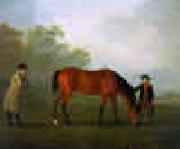 |
Sawrey Gilpin
|
|
1733-1807
English
Sawrey Gilpin Gallery
Gilpin was born 30 Oct 1733 in Cumbria, the son Captain John Bernard Gilpin, a soldier and amateur artist. His elder brother William Gilpin was a clergyman, schoolmaster, and author of several influential works on picturesque scenery.
Apprenticed to the marine painter Samuel Scott of Covent Garden, Sawrey came to specialise in painting animals, particularly horses and dogs, which he sometimes added to backgrounds by other artists, including Philip Reinagle, George Barret and J. M. W. Turner. He was patronised by Prince William Augustus, Duke of Cumberland. Gilpin was Director and President of the Society of Artists, and a member of the Royal Academy from 1796.
Sawrey Gilpin married Elizabeth Broom; their son William Sawrey Gilpin also became an artist, and in later life a landscape gardener.
He died at Broughton, Northamptonshire, England in 1807.
Works by Sawrey Gilpin are in the collections of the Courtauld Institute of Art , Tate Britain [3], and the Royal Academy in London and the Fitzwilliam Museum, Cambridge. |
|
|
|
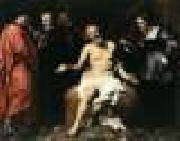 |
SEGHERS, Gerard
|
|
Flemish Baroque Era Painter, 1591-1651
Flemish painter, dealer and collector, active also in Italy and Spain. He grew up in Antwerp, a city that had only recently been liberated from the rebels by the Spanish troops. His father, a keeper of a wine tavern, originally had Calvinist sympathies but returned to the Catholic faith after 1585. Gerard possibly trained, as did afterwards his younger brother Jan Baptist Seghers, who later became a goldsmith, with Gaspar de Crayer (b 1551), the father of the well-known painter of the same name. At the age of 12 Seghers was listed as a pupil in the Guild of St Luke in Antwerp; the documents, unfortunately, fail to mention the name of his teacher. Florent Le Comte (1699) called him a pupil of Abraham Janssen |
|
|
|
 |
SERODINE, Giovanni
|
|
Italian Baroque Era Painter, 1600-1630
Italian painter and stuccoist. His family moved from Ascona on Lake Maggiore to Rome, where his father is recorded in 1595. It is probable that Serodine was born there. His first work was probably done in association with his brother Giovanni Battista Serodine (1589/90-1630), a stuccoist active in Rome, where he carved a Virgin and Child (1614) for the fa?ade of S Francesca Romana, and in Ascona, where he restored the family home and decorated it with stucco (1620). The design and stucco decoration of the church of the Madonna della Fortuna on Monte Verit? (Ascona) are attributed to him, though it is probable that Giovanni (who is recorded in Ascona in 1620) collaborated in the work. The first of Giovanni's documented official commissions, however, was for the stucco decoration and apsidal paintings in the chuch of the Concezione at Spoleto, where he worked with Sante Ghezzi (Corradini; Toscano). These murals, painted in tempera and completed in July 1624, are sketchy and clumsily executed, quite distinct in their inferior quality and naive piety from the rest of Serodine's work. They are probably his first attempts at painting, |
|
|
|
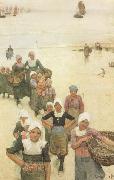 |
Sir George Clausen,RA
|
|
1852-1944
English painter. He was the son of a Danish interior decorator and a woman of Scottish descent. At 14 he was apprenticed to the drawing office of Messrs Trollope, a London firm of decorators. While working there he attended evening classes at the National Art Training School, South Kensington, but his first important artistic contact came when he was sent to decorate a door at the home of the painter Edwin Long. With Long's encouragement, Clausen obtained a two-year scholarship to the South Kensington School of Art and then decided to further his training at the Antwerp Academy. After studying briefly under Professor Joseph Van Lerius (1823-76), he began to sketch in the fishing villages along the Dutch coast; the product of these studies |
|
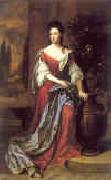 |
Sir Godfrey Kneller
|
|
1649-1723
Dutch (Resident in UK)
Sir Godfrey Kneller Galleries
was the leading portrait painter in England during the late 17th and early 18th centuries, and was court painter to British monarchs from Charles II to George I. His major works include The Chinese Convert (1687); a series of four portraits of Isaac Newton painted at various junctures of the latter's life; a series of ten reigning European monarchs, including King Louis XIV of France; over 40 "Kit-cat portraits" of members of the Kit-Cat Club; and ten "beauties" of the court of William III, to match a similar series of ten beauties of the court of Charles II painted by his predecessor as court painter, Sir Peter Lely.
Sir John Vanbrugh in Godfrey Kneller's Kit-cat portrait, considered one of Kneller's finest portraits.Kneller was born Gottfried Kniller in L??beck, Germany. Kneller studied in Leiden, but became a pupil of Ferdinand Bol and Rembrandt in Amsterdam. He worked in Rome and Venice in the early 1670s, painting historical subjects and portraits, and later moved to Hamburg. He came to England in 1674, at the invitation of the Duke of Monmouth, accompanied by his brother, John Zacharias Kneller, who was an ornamental painter. He was introduced to, and painted a portrait of, Charles II. In England, Kneller concentrated almost entirely on portraiture. He founded a studio which churned out portraits on an almost industrial scale, relying on a brief sketch of the face with details added to a formulaic model, aided by the fashion for gentlemen to wear full wigs. His portraits set a pattern that was followed until William Hogarth and Joshua Reynolds.
Nevertheless, he established himself as a leading portrait artist in England. When Sir Peter Lely died in 1680, Kneller was appointed Principal Painter to the Crown by Charles II. In the 1690s, Kneller painted the Hampton Court Beauties depicting the most glamorous ladies-in-waiting of the Royal Court for which he received his knighthood from William III. He produced a series of "Kit-cat" portraits of 48 leading politicians and men of letters, members of the Kit-Cat Club. Created a baronet by King George I, he was also head of the Kneller Academy of Painting and Drawing 1711-1716 in Great Queen Street, London. His paintings were praised by Whig luminaries such as John Dryden, Joseph Addison, Richard Steele, and Alexander Pope.
Kneller died of fever in 1723 and his remains were interred in Twickenham Church (he was a churchwarden there when the 14th century nave collapsed in 1713 and was involved in the plans for its reconstruction). The site of the house he built in 1709 in Whitton near Twickenham is now occupied by the mid-19th century Kneller Hall, home of the Royal Military School of Music
|
|
|
|
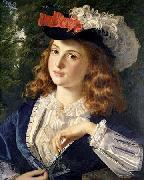 |
Sophie Gengembre Anderson
|
|
Sophie Gengembre Anderson (1823 - 10 March 1903) was a French-born British artist who specialised in genre painting of children and women, typically in rural settings. Her work is loosely associated with the Pre-Raphaelite movement.
Sophie was born in Paris, the daughter of Charles Gengembre, an architect, and his English wife. She had two brothers, Philip and Henry P. She was largely self-taught in art, but briefly studied portraiture with Charles de Steuben in Paris in 1843. The family left France for the United States to escape the 1848 revolution, first settling in Cincinnati, Ohio, then Manchester, Pennsylvania, where she met and married British genre artist Walter Anderson.
|
|
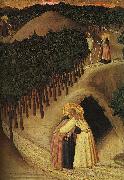 |
Stefano di Giovanni Sassetta
|
|
1423-1451
Italian
Stefano di Giovanni Sassetta Gallery
Stefano di Giovanni, known as il Sassetta, (Siena 1392 ?C 1450 or 1451) was an Italian painter. He was born in Siena, although there is also an hypothesis that he was born in Cortona. However, the first historical record of him was in Siena in 1423. Di Giovanni was probably the apprentice of Paolo di Giovanni Fei although it is also thought that he may have studied under Benedetto di Bindo. He painted in the semi-archaic Sienese School style of painting. Francesco di Giorgio e di Lorenzo, better known as Vecchietta, is said to have been his apprentice. |
|
 |
STUBBS, George
|
|
English Romantic Painter, 1724-1806
English painter, draughtsman and printmaker. His study of anatomy enabled him to paint horses, dogs and wild animals with unsurpassed truth to nature, while his innate sense of design enabled him to achieve graceful, rhythmic compositions. His contemporary reputation was chiefly based on portraits of horses and dogs; but he also painted human portraits, conversation pieces and imaginative subjects with animals. |
|
|
|
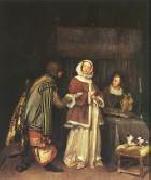 |
TERBORCH, Gerard
|
|
Dutch Baroque Era Painter, 1617-1681
Dutch genre and portrait painter. He studied with his father and traveled throughout Europe, showing extraordinary precocity in his early work. In 1648 he attended the congress at Menster and painted portraits of the delegates that he incorporated in his celebrated group, The Peace of Menster (National Gall., London). Soon after, he was invited to Spain, where he worked for Philip IV. On returning to Holland in 1650 he painted a variety of genre scenes, capturing the individuality of each subject and portraying the life and customs of the wealthy burgher class with rare dignity and distinction. The tiny portraits and the interiors that were his specialty are painted with elegance, serenity, and a technique of consummate craftsmanship. Among his most famous pictures are Self-Portrait and The Toilet (The Hague), and The Guitar Lesson (National Gall., London). |
|
 |
Theodore Gericault
|
|
French Romantic Painter, 1791-1824
Born in Rouen, France, Gericault was educated in the tradition of English sporting art by Carle Vernet and classical figure composition by Pierre-Narcisse Gu??rin, a rigorous classicist who disapproved of his student impulsive temperament, but recognized his talent.
The Charging Chasseur, 1812.Gericault soon left the classroom, choosing to study at the Louvre instead, where he copied from paintings by Peter Paul Rubens, Titian, Diego Vel??zquez, and Rembrandt for about six years, from 1810 to 1815. There he found a vitality which he preferred to the prevailing school of Neoclassicism. |
|
|

